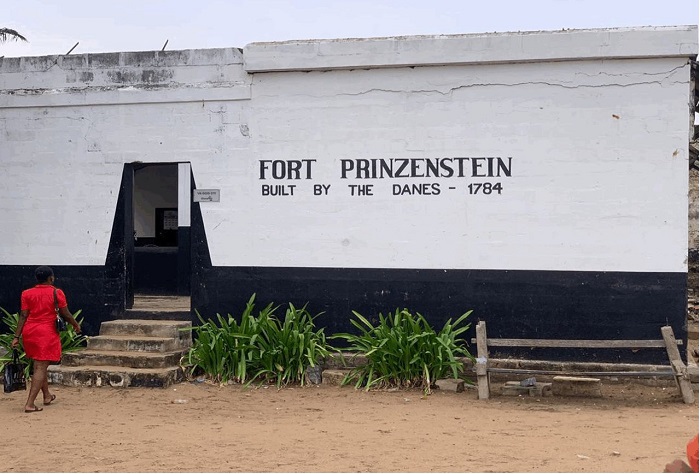Fort Prinzenstein is Ghana’s oldest fortress, located in Keta, a coastal town in the Volta Region. Danes built the Fort in 1784.
Prinzenstain functioned as a trading post and defensive structure during European colonisation and the Atlantic slave trade.
The fort’s location along the coast makes it an important site for controlling trade routes and exporting enslaved Africans.
The fort served as a trading post, prison, and administrative centre.
Fort Prinzenstein has long been a popular tourist destination, attracting visitors from all over to explore its rich historical legacy. Despite its historical importance, the fort has seen a worrying decline in visitor numbers in recent years.
Fort Prinzenstein is now a UNESCO World Heritage Site, serving as a poignant reminder of the region’s colonial history and the transatlantic slave trade. Although much of the fort has been damaged by coastal erosion and other environmental factors, it remains a historic site and a popular destination for visitors interested in Ghana’s heritage.
Nonetheless, Keta Central Assemblyman James Ocloo attributes the decline to the fort’s deterioration. A serious incident occurred in 1980 when the sea eroded half of the fort, and the male dungeon is currently in ruins as a result of ongoing sea damage, making the area unattractive to both visitors and investors. Nonetheless, the fort continues to attract tourists, and the revenue generated from these visits is critical to the local community.
Mr. Ocloo has emphasized the need for urgent renovations to restore the fort, highlighting its significant contribution to national revenue. He mentioned that the Ghana Museums and Monuments Board, in collaboration with the government, is making efforts to revive the fort. Increased awareness and appeals have been directed at the government to expedite these restoration efforts, aiming to make the fort a more appealing destination for tourists.
Residents of Keta, particularly those involved in fundraising efforts, are working to restore Fort Prinzenstein for future generations. However, Mr. Ocloo lamented the slow pace of economic progress, which impedes visible change. He is confident that restoring the fort will increase revenue generation for the country.
Despite Keta’s vibrant nature, many residents, particularly traders, have petitioned the government to renovate the fort. They argue that the fort’s presence not only increases local government revenue but also makes the town more appealing to various businesses, such as restaurants, hotels, pubs, and others. Establishing such businesses would create jobs and help to alleviate social problems among the town’s youth.
To summarise, restoring Fort Prinzenstein is critical not only for preserving its historical significance but also for revitalising the local economy and increasing the town’s appeal to tourists and investors. The community, local authorities, and government will work together to revitalise this historic landmark.
RASHIDA IBRAHIM
UNIMAC-IJ
FACULTY OF JOURNALISM
ibrahimsheeda143@gmail.com
